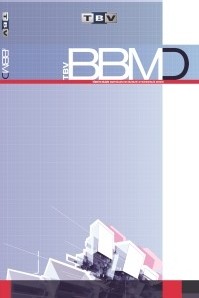Model Güdümlü Taktiksel Harp Sahası Yönetim Sistemi Tasarımı
Harp Yönetim Sistemleri, Model Güdümlü Yazılım Geliştirme, Alana Özgü Dil Tasarımı, UML Ayrımlama Yöntemi, ÜstModel, Model Dönüşümü
Model Driven Development Approach for Tactical Battlefield Management
Battle Management System, MDSD DSL, UML Profiling, Meta-model from scratch, XText, Model to model transformation, model to text transformation,
___
- Thales, 2010. Tactical battlefield management systems: T-BMS, comm@nder. Kaynak: http://www.thalesgroup.com
- M. Suppliers and News, 2010. Tactical battlefield management systems - TROP. Kaynak: http://www.armedforces-int.com/article/tactical- battlefield-management-systems-trop.html
- Systematic, 2010. Sitaware battle management. Kaynak: http://www.systematic.com
- B. Systems, 2010. Battle management system. Kaynak: http://www.baesystems.com
- R. Blobalnet, 2010. BattleHawk combat management system. Kaynak: http://www.rfglobalnet.com/product.mvc/Combat- Management-Systems
- L. Martin, 2010. Tactical battle management core systems (TBMCS). Kaynak: http://www.deagel.com/Display-and-Network- Systems/TBMCS_a001286001.aspx
- W. P. Sudnikovich, J. M. Pullen, M. S. Kleiner ve S. A. Carey, 2004. “Extensible battle management language as a transformation enabler”, sayı 80, no.12, sayfa 669--680.
- SISO, 2010. C-BML product development group. Kaynak: http://www.sisostds.org
- A. Bordertsky, R. B. L. Duffy, E. Bach ve C. Oros, 2004. “A proposed model of battle rhythm at the tactical level”, 9. International Command and Control Research and Technology Symposium, San Diego, CA.
- R. W. Jacobs, 2004. “Model-driven development of command and control capabilities for joint and coalition warfare”, 9th International Command and Control Research and Technology Symposium, San Diego, CA.
- The Eclipse Modeling Framework (EMF) overview, 2010. Kaynak: http://help.eclipse.org
- ISSN: 1305-8991
- Başlangıç: 2005
- Yayıncı: Türkiye Bilişim Vakfı
Türkçe Metinler için Olay Sıralaması
JADEX Kanı-İstek-Hedef Etmenlerinin Model Güdümlü Geliştirilmesi
Bekir Afşar, Geylani Kardaş, N. Yasemin Topaloğlu, Oğuz Dikenelli
Kablosuz Duyarga Ağları ile Engelli İnsanlar İçin Akıllı Ev Uygulamaları
Ali Haktan Işılak, Şebnem BAYDERE
Model Güdümlü Taktiksel Harp Sahası Yönetim Sistemi Tasarımı
Ethem Fatih Can, Özgür Aydın Tekin, Mahmut Devrim Tokcan
Java Card Yazılımlarının Model Güdümlü Geliştirilmesi
Hidayet Burak SARITAŞ, Geylani KARDAŞ
Yakın Alan İletişimi Teknolojisi
Büşra Özdenizci, Kerem Ok, Mehmet N. Aydın, Vedat Coşkun
Sanal Cerrahi Uygulamalarında Görselleştirme Altyapısı
Dionysis GOULARAS, Başar ATALAY, Esin Onbaşıoğlu, Koray K. Şafak, Fethi Okyar, Ahu Soydan
Ulusal Aşı Bilgi Sistemi: Ontoloji Tabanlı Sağlık Bilgi Sistemi
Murat Osman ÜNALIR, Emine ÜNALIR, Özgü CAN, Halil ŞENGONCA
